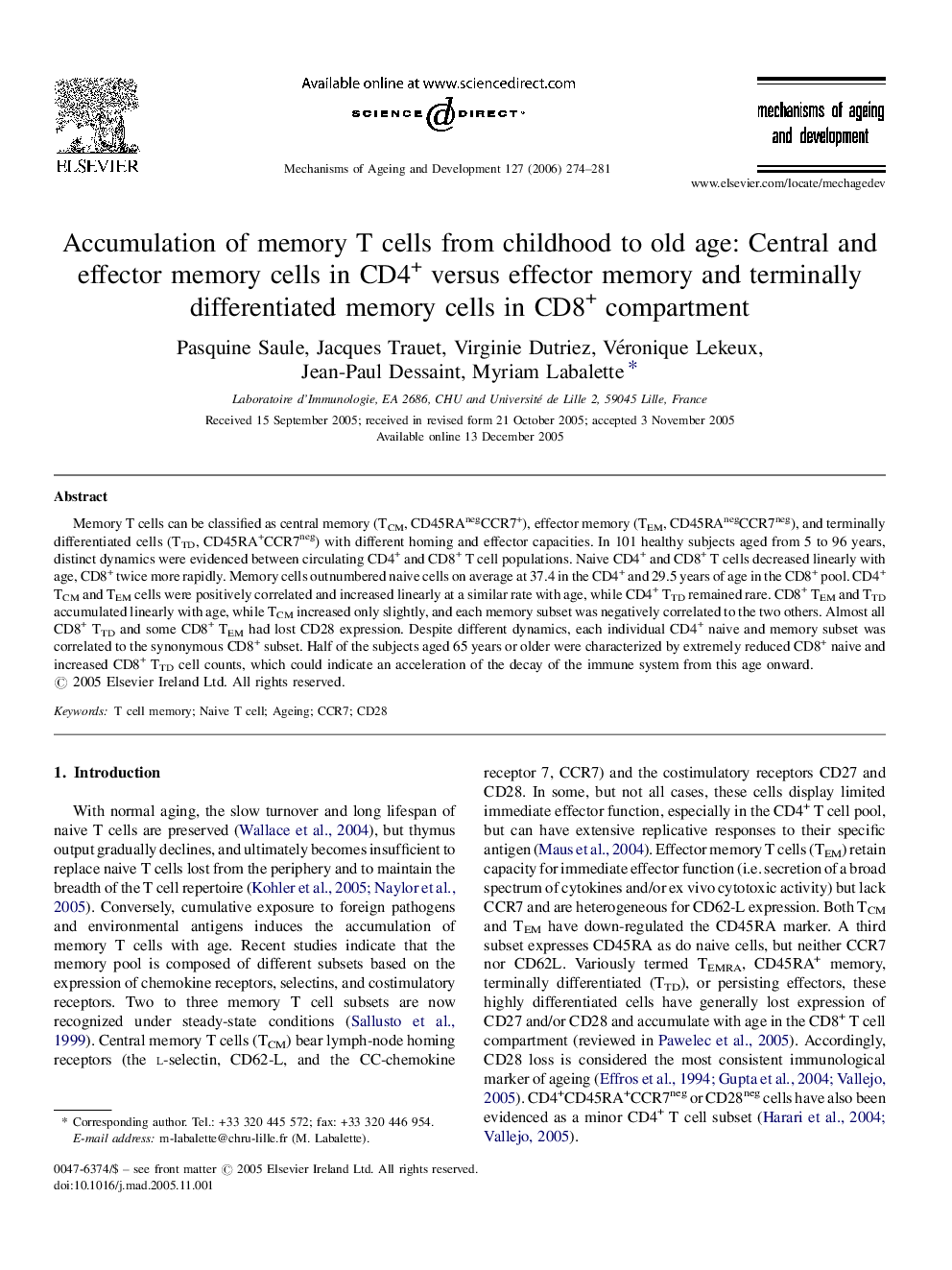| Article ID | Journal | Published Year | Pages | File Type |
|---|---|---|---|---|
| 1919989 | Mechanisms of Ageing and Development | 2006 | 8 Pages |
Memory T cells can be classified as central memory (TCM, CD45RAnegCCR7+), effector memory (TEM, CD45RAnegCCR7neg), and terminally differentiated cells (TTD, CD45RA+CCR7neg) with different homing and effector capacities. In 101 healthy subjects aged from 5 to 96 years, distinct dynamics were evidenced between circulating CD4+ and CD8+ T cell populations. Naive CD4+ and CD8+ T cells decreased linearly with age, CD8+ twice more rapidly. Memory cells outnumbered naive cells on average at 37.4 in the CD4+ and 29.5 years of age in the CD8+ pool. CD4+ TCM and TEM cells were positively correlated and increased linearly at a similar rate with age, while CD4+ TTD remained rare. CD8+ TEM and TTD accumulated linearly with age, while TCM increased only slightly, and each memory subset was negatively correlated to the two others. Almost all CD8+ TTD and some CD8+ TEM had lost CD28 expression. Despite different dynamics, each individual CD4+ naive and memory subset was correlated to the synonymous CD8+ subset. Half of the subjects aged 65 years or older were characterized by extremely reduced CD8+ naive and increased CD8+ TTD cell counts, which could indicate an acceleration of the decay of the immune system from this age onward.
